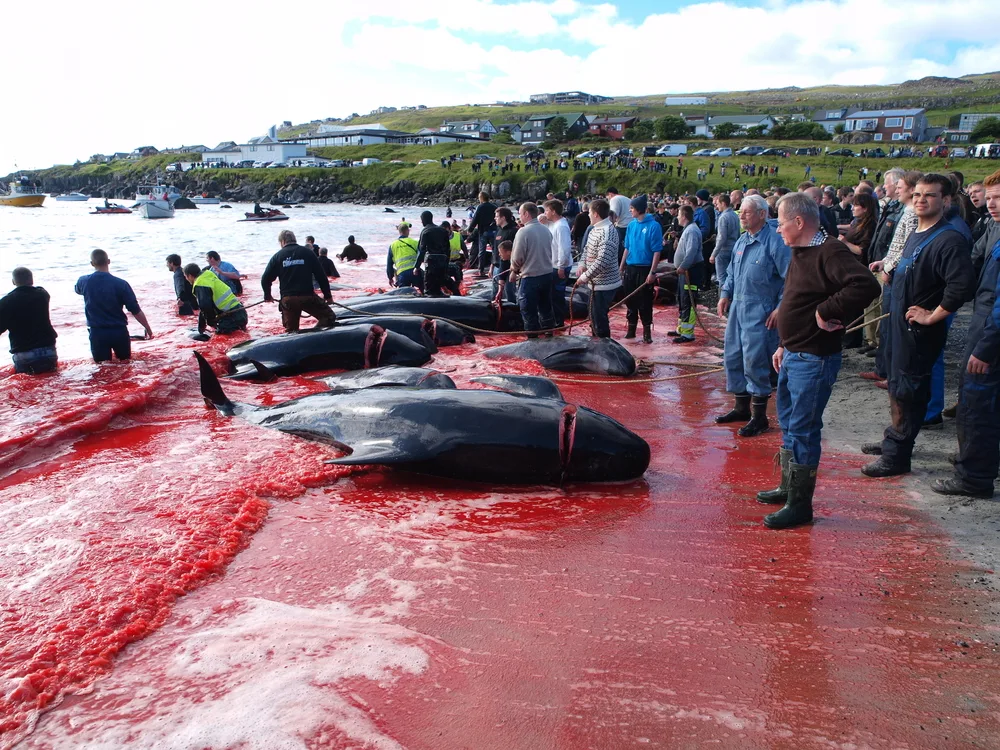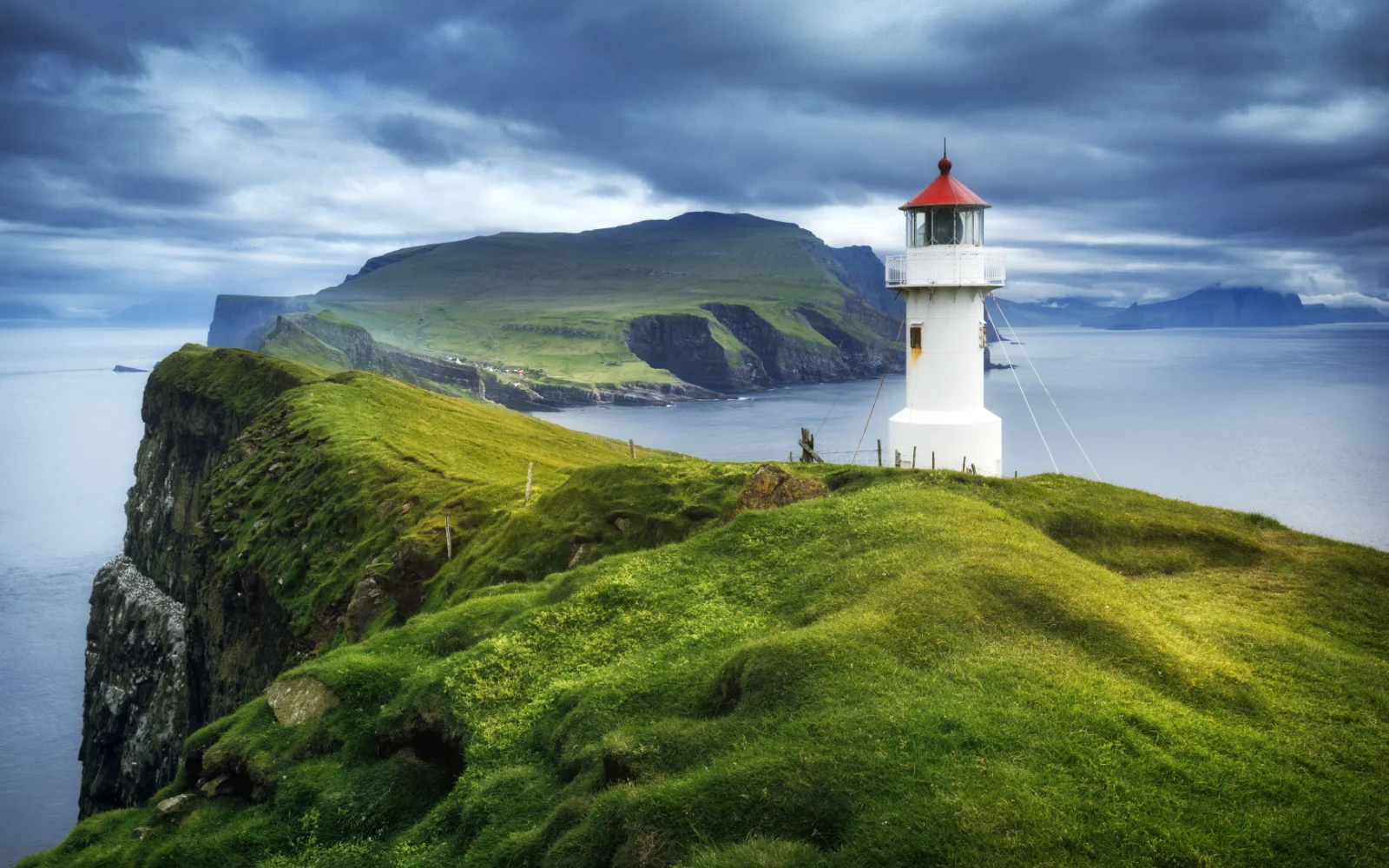The Faroe Islands, an autonomous territory of Denmark, are becoming more and more popular among tourists searching for pristine nature.
Around 100,000 people make the trek to this remote, sparsely populated region of the Arctic each year. The sparse, beautiful natural landscapes are one of the primary reasons people visit.
But are the Faroe Islands safe to visit? We’ll break it down for you.
Are the Faroe Islands Safe to Visit in 2025?

Nick Fox/Shutterstock
Yes. The Faroe Islands are a very safe place to visit. The sparsely populated region barely experiences any crime.
However, you should be careful of the wild nature as things become unpredictable when you are this far north. The Faroe Islands are one of the safest regions in the world and experience almost no crime.
You could potentially experience some petty crimes such as:
- Pickpocketing
- Petty theft
- Scams
However, the rate of even these minor crimes is very, very low. More serious crimes, such as robberies and assault, are practically non-existent on the islands.
In fact, many locals never lock their doors because the thought of needing to protect themselves from criminals doesn’t even cross their mind.
There are no health threats on the Faroe Islands, and the CDC does not have any specific advisories for the region at this time. Health facilities on the islands are generally excellent, even though they serve a small, remote population.
Maybe the reason why criminals are so few and far between on the Faroe Islands is that nature provides enough of a challenge for getting by. Your primary concern for safety is the rough and rugged landscape that will surround you when visiting.
In its travel advisory for Denmark, the UK government warns travelers to take extra precautions when visiting Arctic regions of the country such as Greenland and the Faroe Islands.
Some parts of the islands are very remote, and rescue operations can take a while to reach you if you run into trouble.
When visiting remote areas, always go with a trusted tour operator and make sure your travel insurance covers evacuations.
The Australian government also mentions this risk in its travel advisory for the islands and advises travelers to keep that in mind when planning their trip.
Since most of what you will be doing in the Faroe Islands involves outdoor activities, you should plan your packing accordingly. Make sure that you choose practicality over fashion and bring sturdy hiking shoes and clothing.
The temperature is surprisingly mild for a location this far north, but very rainy and unpredictable, so bring plenty of layers and clothing that will dry quickly.
The official Faroe Islands travel website reminds visitors to bring appropriate clothing and equipment for their trips. You can check the site for suggested packing lists for all sorts of activities, from hiking to birding.
Always let someone know about your hiking plans. It can be the host of your accommodation or someone else. The Faroe Islands government even prepared a leaflet for tourists to fill out and leave on the windshield of their car for authorities to pick up.
If something happens, you want someone to be able to contact a rescue party.
When going hiking, prepare as if you might get lost although you should take precautions such as researching your route or going with a local guide to prevent this from happening.
Bring items to help you stay on your route such as a GPS, a map, and a satellite locator. Take extra food, water, and warm layers if you get lost. If you get lost, stay in one place to make rescue operations easier.
Finally, the landscape of the islands is beautiful but contains hidden dangers, so there is no need to court danger with reckless behavior. Don’t walk too close to the cliffs or edges to get a better photo. Tourists have died in the past from slipping and falling on the harsh landscapes.
Crime in the Faroe Islands

Sergiy Vovk/Shutterstock
Crime is not a problem you need to worry about in the Faroe Islands. According to the official tourism website, crime is practically nonexistent.
People on the islands are used to living in complete safety and not worrying about criminals at all. This is not just a lie tourism boards made up to attract visitors. The assertion that the Faroe Islands has barely any crime is backed up by local crime statistics.
In 2014, there were only 700 reported crimes in the entire territory. The islands have a crime rate that is 25% lower than other Nordic regions — and Nordic countries have a reputation for being very safe.
Almost all of the crimes committed were petty in nature. Violent crimes make up about 12.8% of total crimes committed. The most common crimes were theft and vandalism, which are petty offenses.
Violent crimes, especially extremely violent crimes, are extremely rare on the Faroe Islands. The islands were shocked in 2012 when they had their first murder conviction in over two decades!
In fact, crime is so rare on the Faroe Islands that the local prison only has space for 12 inmates. You can tell by local opinions just how low crime rates in the Faroe Islands are.
According to Numbeo, which collects crime data based on surveys, the Faroe Islands score a 13.24 out of 100 on the crime index, which is a very low value. People report the most concern about petty crimes such as drug abuse, petty theft, and vandalism.
What this means for tourists is that you are unlikely to experience a crime while you are visiting the Faroe Islands.
You shouldn’t throw caution completely to the wind, especially as rising tourist numbers also lead to a slight increase in crime, but you don’t need to spend your whole vacation on edge.
Pickpocketing
Petty theft is not nearly as common in the Faroe Islands as in most other European destinations. However, it is still a good idea to be careful of this potential risk when you move around the islands.
You should be especially careful in Torshavn, the capital and the most densely populated area of the islands.
That’s not necessarily because Torshavn is a crime-ridden town, but because it has the most crowds, relatively speaking. Crime in the capital is going to be more likely than on remote hiking trails.
Basic precautions are enough to deter thieves on your trip. Make sure that you never leave your items unattended, even for a short while.
Although theft is rare in the territory, it’s still a good idea to put valuables in inner pockets or zipped compartments of your bag, where they are not easily accessible. Leave valuables in your hotel room safe if possible.
Many tourists rent a car to get around the islands and park at trailheads. While most locals don’t lock their cars, it is a good idea for you to do so to prevent theft from your rental vehicle. Make sure that any valuables are not visible from outside the car.
Tourist Scams
As tourism increases in the Faroe Islands, so are businesses dedicated to tourists such as hotels, rental cars, and tour companies. However, a small fraction of these companies are not honest companies but looking to part tourists with their hard-earned money.
Make sure that you research the accommodation you book and that there are plenty of previous customer reviews.
You don’t want to book with a ghost accommodation, or a listing that isn’t real. This is especially a problem in the summer, when finding other accommodation on the Faroe Islands is very difficult.
Some tour companies and car rental companies do not meet the standards that they promise when tourists book with them. Always make sure that you read reviews on third-party sites such as Reddit or TripAdvisor before you pay a deposit.
Reading reviews is especially important when booking tour companies for adventure activities such as boat tours around the islands.
These activities carry an additional safety risk with them, and you want to make sure that you are doing them with a company that has the safety of its visitors in mind, not just profit.
Avoiding Bad Areas
There are no dangerous parts of the Faroe Islands. The crime rate is so low that all parts of the islands are safe. However, be careful when traveling to more remote areas for adventure travel.
Make sure that you research your route ahead of time and memorize emergency contacts. Always inform someone else of your plans.
Things to Consider

TÓRSHAVN, FAROE ISLANDS – JULY 23, 2010: 108 Long-finned pilot whales are beached and killed. On Faroe Islands people have been eating the meat and blubber from pilot whales for centuries/KasperFiil/Shutterstock
Here are a few additional safety tips for visiting the Faroe Islands:
- Keep in mind that late summer is the whaling season. Despite widespread international outcry and protests from regional environmental groups, whale killings are still common community events in the territory. Even if you may personally disagree with this, try to keep your opinions to yourself when talking to locals. In July and August, if you notice many cars around a bay or harbor, that’s probably a sign of an ongoing whaling event.
- The emergency number in the Faroe Islands is 112. Call this number in case of any emergency and the authorities will help you.
- Buy good travel insurance. The territory only has agreements to honor the national insurance of a few countries, so check if yours is on your list. You need the insurance to cover any medical treatments and potential evacuation from remote areas.
- If you are driving, be careful of rural roads. Some are very narrow and still made of gravel.
Frequently Asked Questions

Smit/Shutterstock
Here are some common questions you might want to know about the Faroe Islands:
Is it worth going to Faroe Islands?
The Faroe Islands are absolutely worth visiting, especially if you are a nature lover. The beautiful territory features stunning arctic landscapes, dramatic cliffs, and rolling hills. Plus, there are few other places on Earth where you can get so close to puffins and other migrating birds.
Are Faroese people friendly?
Faroese people on first glimpse seem cold. That is because like in most Nordic countries, people tend to be more reserved than people in other regions, such as southern Europe. However, locals are generally welcoming towards visitors and willing to help anyone in trouble.
Is the tap water in the Faroe Islands safe to drink?
Yes, the tap water in the Faroe Islands is very safe to drink. Some locals even claim that it is the best tasting, purest tap water in the world!
Should I visit Iceland or the Faroe Islands?
Both Iceland and the Faroe Islands have their strengths and drawbacks. Iceland has far more landscapes and is more developed, making it a more comfortable trip option.
However, it also has more crowds. The Faroe Islands are still an off-the-beaten-path destination, so you will get closer to remote landscapes with fewer crowds in the way.
Is the Faroe Islands expensive?
Visiting the Faroe Islands is expensive. There are a few accommodation options in the territory, so hosts can charge a lot of money. The cost of living is also high because most items need to be imported.
So, Are the Faroe Islands Safe to Visit?
Thanks to the low crime rate, the Faroe Islands are very safe to visit. Just make sure that you take precautions to keep yourself safe when exploring the beautiful but treacherous landscapes.
So, with so much to see and do, and a very safe environment in which to travel, what are you waiting for — book your trip today and experience for yourself all that the Faroe Islands have to offer!



